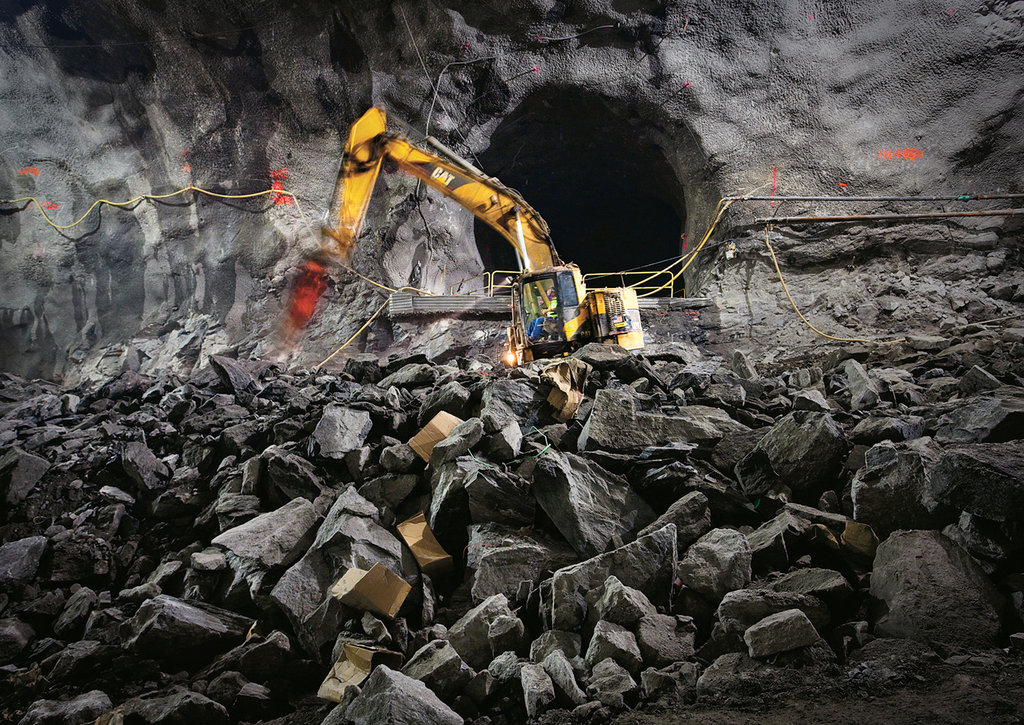
The New York Times Magazine has an article about the Tunneling Below Second Avenue:
“Geology defines the way you drive the tunnel,” Mukherjee said. The bedrock below Second Avenue and for much of the rest of Manhattan is schist — a hard, gray black rock shot through with sheets of glittery mica. Some 500 million years ago, Manhattan was a continental coastline that collided with a group of volcanic islands known as the Taconic arc. That crash crumpled layers of mud, sand and lava into schist, lending it an inconsistent structure and complicating tunneling: in some places, the schist holds firmly together, creating self-supporting arches; in others, it’s broken and prone to shattering, forcing workers to reinforce the tunnel as they go to keep it from falling.
The first time New York confronted its bedrock to build a subway, in 1900, the method was “cut and cover”: nearly 8,000 laborers given to gambling, fighting and swearing were hired to pickax and dynamite their way through streets and utility lines for two miles. Their efforts were quick — they finished in four years — but their blasts smashed windows and terrorized carriage horses. Tunnels collapsed, killing workers and swallowing storefronts.
Accompanying the article is a short movie directed by Jacob Krupnick of Girl Walk // All Day fame. The video is quite good, and is a step up from the usual NY Times shorts. Go on, and have a view.